Vinyl records, and more recently, cassette tapes, have been experiencing a huge revival, but to anyone who wasn’t alive before the Internet age it may not be easy to perceive the true relevance of owning music solely in a physical format. Long before we had online streaming or Compact Discs, music albums arrived mainly packed in large, beautiful covers, through the superlative and noble format of vinyl Long-Playing records. That turned out to be one of the finest ways to display outstanding artworks, and in consequence, present photography in all its deserved glory. Unlike with tiny CD covers that resemble more like a sort of promotional leaflets, we behold some pictures in LPs, with almost the same awe and delight as photography in a gallery.

Actually, framed LPs and singles are nowadays available for sale in stores as items for home decoration. I personally take additional pleasure in looking at the LP cover leaning against the wall while sitting on the couch listening to a record playing. Blue Note jazz record covers by Reid Miles & Francis Wolff immediately come to mind, they stand out as the ultimate match of graphic design work and awesome black and white photography. The Smiths’ records, with their impeccable selection of monochrome tinted photos, mainly of popular culture icons, are perhaps my earliest and strongest memory of the powerful association of photography with music.

Like many teenagers, I grew up enthralled by the appearance and behaviour of my favourite music bands. Among other records, Echo & the Bunnymen self-titled album from 1987 had a deep impact on me. Besides the songs, I loved the cover: a portrait of the band members by the great Dutch photographer Anton Corbijn. I was then a 15-year-old boy, and their hairstyles and all-black outfits, along with the stylish, sober posture, summed up in one image what I sought as the coolest look to adopt and express my dissent and sense of identity. That was a solid visual statement to stand aside from the dumb and cheesy mainstream of those boring years. In the back cover, another memorable photo: the group gathered with arms opened, forming a star-shaped odd silhouette, reminiscent of some ancient pagan or Hindu deity.

Corbijn’s gorgeous and austere black and white wonderfully captured a certain mood of brooding and dejection prevalent in most of the British indie scene of that time, as seen in bands like The Jesus and Mary Chain, The Cure, Bauhaus or The Smiths, all equally influential and bearers of strong photogenic features.
Not long ago, while going through old photo albums at my parents in Portugal, I recognised that same particular mood, sense of drama and similar outfits in photos that me, my brother and friends took of ourselves in the Nineteen-Eighties, somehow mimicking our music idols, teenage aloof posers that we were. Video clips of independent bands were then truly scarce on the two existing public TV channels; therefore, our wardrobe and style tips basically came straight from what we had at hand, meaning printed photography in a few musical newspapers, magazines, posters and naturally, in record covers.

Music had a strong visual presence. We borrowed records from each other; someone walking around the schoolyard with a LP under their arm was then a common sight. Often, due to its graphic appeal, it seemed to be part of the outfit, like a fashion accessory emphasising and affirming an attitude of young rebellion or avant-garde intellectual; from the striking capture of Paul Simonon smashing up his bass into the stage in The Clash’s London Calling cover to a hedonistic Joe Dallesandro statuesque torso in the front of The Smiths debut album, the large pictures truly stood out.
Contrary to the plethora of images we access today, the relative frugality of that era most certainly played a role on the distinct iconographic value that some of those covers with their outstanding photographs and illustrations have acquired throughout the years. At times, when I recall the Nineteen-Eighties, a recurring imagery pops up in my brain, composed randomly by a scant few photos from record covers that in the course of time remained imprinted on my visual cortex, the same covers that sheltered my soundtrack for that era.
The imagery that helped strengthen my sense of individuality also provided crucial aesthetic guidelines to my artistic development, revealed later in some of my photography work, particularly in the way I tend to portrait people today. And I confirmed this recently, while working with Bradford in a photo shoot I did in London for their coming-back album.
Bright Hours
It would have been impossible to imagine, eight years ago, after taking a photo of the Tagus River through a window in Lisbon that it would end up on a LP cover of a British band, but that was just what happened.
Bradford formed in 1987 in Blackburn, and they were quite a revelation on the indie scene, with their highly praised debut album, Shouting Quietly, produced by Stephen Street launched in 1989. Furthermore, Morrissey, who had recorded a cover of their first single Skin Storm, claimed then that Bradford were The Smiths natural successors. International tours followed, supporting bands like The Sugarcubes, Primal Scream or Joe Strummer. However, by 1991, blurred by the advent of the Madchester scene, the band faded and finally split, with some of the musicians following different projects.
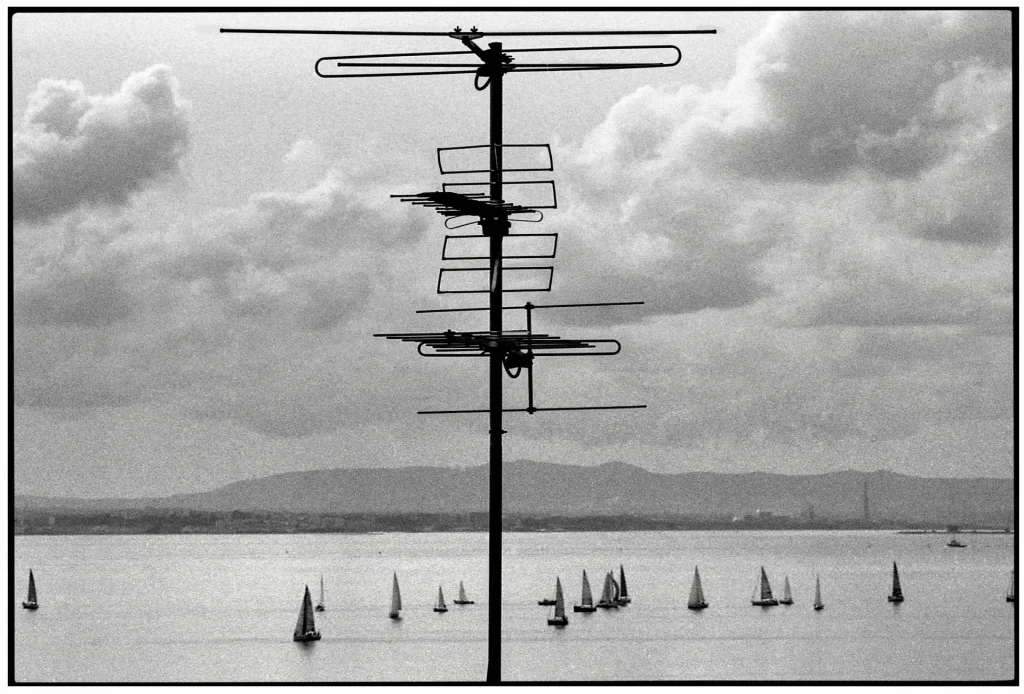
Now, thirty years later, Bradford reunited with two of the original members, Ewan Butler and Ian Hodgson joining producer Stephen Street for the recording of a new album: Bright Hours. Early last year, Ewan who was already familiar with my work, contacted me showing interest in using one of my photos on the cover of Bradford’s upcoming album, to be released in both LP and CD formats in February 2021.
After exploring the images on my Facebook photography page, he chose the one of the Tagus view. I had taken it from my top neighbour’s flat while living in Lisbon. It was an overcast, mild afternoon, looking through the window a regatta was passing by, and I remember observing the scene thinking of idyllic painted landscapes from distant times, as in some peaceful maritime motives by Claude Monet. Determined to capture the moment, I grabbed my Nikon FM2n, coupling it with a long lens that I rarely use, the AF Nikkor 75-300mm f/4.5-5.6.

By choosing a focal length of around 150-200mm, it proved to be perfect for the framing I had in mind: the sailboats gently cruising the river over a background of mountains and cloudy sky, all vertically crossed by a providential old TV aerial. This lens allowed me to isolate the aerial, the only detail of the city that I wanted to preserve in the picture. Without a telephoto, the haphazard pattern of buildings and rooftops between my point of view and the river would become visible.
In fact, one of the things I like the most when composing an image is the possibility to deliberately conceal some elements, in order to keep a certain mystery. In this particular photo, showing the houses with their distinct rooftops could easily help identifying the city as Lisbon, giving the image perhaps a dull postcard look, and I prefer it not to be so obvious; moreover, existing satellite dishes and solar panels would situate the photo unequivocally in recent times.
This said, not only do I enjoy the graphic vibrancy of the old TV aerial, but I also feel that it offers the image a more timeless, vintage appeal, puzzling the viewer about the date it was taken. Later, I was happy with the cover and the way the designer’s artwork plays with the image, the photo was cropped to fit the record’s square format, and one of the sails was painted orange in post-production, matching the colour of Bradford’s logo.
Preparing the Session & location scouting

Afterwards, I was asked to do the promotional photo shoot for Bradford in London. As we were then at the onset of the COVID-19 pandemic, the session had to be postponed for some months, so we booked it for the beginning of July. In the meantime, the concept and location details would have to be discussed with the musicians.
The shooting would happen in three different locations: the first part in Stephen Street’s studio The Bunker, for a few captures of the band interacting in the recording environment; the second one under the Westway, an elevated section of the A40 road in West London, in the vicinity of Stephen’s studio, and finally, around Chiswick and Hammersmith riverside areas to have some shots by the Thames.
I struggled then with the usual dilemma: what cameras would I use? I normally prefer to restrict myself to film, but recently, for practical, and mostly, professional reasons, I started to work simultaneously with digital, because most times it is literally impossible to assure a prompt response, as we could expect great pressure to finish and deliver the work on the day.

Although there was not a short deadline for delivery in this case, I thought that it would be an excellent opportunity to try different systems and cameras, granting a richer, broader selection at the end. However, without the help of an assistant, it would be certainly quite stressful to simultaneously switch between equipment and having to focus in all the demanding tasks of the photo session.
I always try to photograph with all my cameras as much as I can. If one is left unused for a while on the shelf, as childish as this may sound, I start to worry that it could suffer from a fear of abandonment and replacement, not unlike a Toy Story character. So, after carefully considering, I decided to take four different cameras to the shooting: Leica M6, Fuji X-T3, Nikon FM2n and Mamiya C33.

The week before the session, with the restrictions eased, I went to Hammersmith for the location scouting. These days we can walk any area virtually through Google Maps, but for me, it is rather helpful to literally go to places before the day of the shooting. I really enjoy exploring the hidden streets and back alleys, letting myself get lost and wandering about erratically like a flâneur, thus experiencing the light and the scents, the street life and the mood of a particular area.
Along with the pleasure of discovering the suitable spots, visiting the locations allows me to develop an inner narrative around them, and sometimes mere scattered thoughts are valuable, like flashes of scenes from an imaginary film, an idealised, fictional context that inspires me for the upcoming session.

The Bunker

The day of the photo shoot I headed to Latimer Road Tube station for The Bunker, Stephen Street’s studio, carrying my Billingham 445 bag loaded with 8kg of equipment. It was a moderate, partly cloudy morning and I would finally meet the band, as until then we had just been in touch by email and text messages. I was amazed by the warm welcome I received. These are really awesome guys, the kind complicity they share from years of friendship immediately shows up and the empathy sets in. I must say I was lucky, sometimes people can be quite challenging to portrait and here the instant affinity helped on the required accuracy and fluidity of the session.
I was familiar with Stephen’s work as a producer since my teen years, particularly for his work with The Smiths, Morrissey and Blur, so I was delighted to meet him in person. Ian and Ewan had made a long journey into London, driving from the North, but that didn’t affect their good mood at all.

We started the shooting in the studio with the band wearing relaxed clothes, playing the instruments in a short, joyful rehearsal. With low ambient light conditions, and not having high-speed film at hand, the available high-ISOs of a digital camera are convenient; therefore, for this first part of the session I have used exclusively my Fuji X-T3, leaving the film cameras for the ensuing outdoor photos.
I had bought the camera recently, taking advantage of a good discount, as the newest, not so much improved X-T4 had had been launched. The X-T3 is a fantastic 26MP APS-C mirrorless camera, very light and compact, even when the useful Vertical Power Grip is mounted, which in my case means all the time.

I took three lenses to the session: the XF 18mm f/2, the XF 35mm f/1.4, and the XF 50 mm f/2. Before buying it, I had read a few unflattering reviews about the 18mm, mostly concerning softness in the corners or some distortion issues. Nevertheless, from my experience, I really can’t complain, as I have had nothing but good results, it served me perfectly well on the raw, documentary style approach that I like to take. In the studio shots it helped me to create some dramatic compositions, the wide angle, similar to a 27mm in a 35mm camera, powerfully accentuated the guitars and studio panels leading lines, increasing the dynamic of the musicians in the rehearsal.

The 50mm f/2 and the 35mm f/1.4 are both excellent lenses, displaying superb image quality at all apertures, they were the evident choice for the individual (digital) portraits. The 50mm is the less intrusive, granting more privacy, as a reasonable distance to the subject is needed. The shallow depth of field of this 75mm equivalent concedes a compelling, intimate look to the photo.
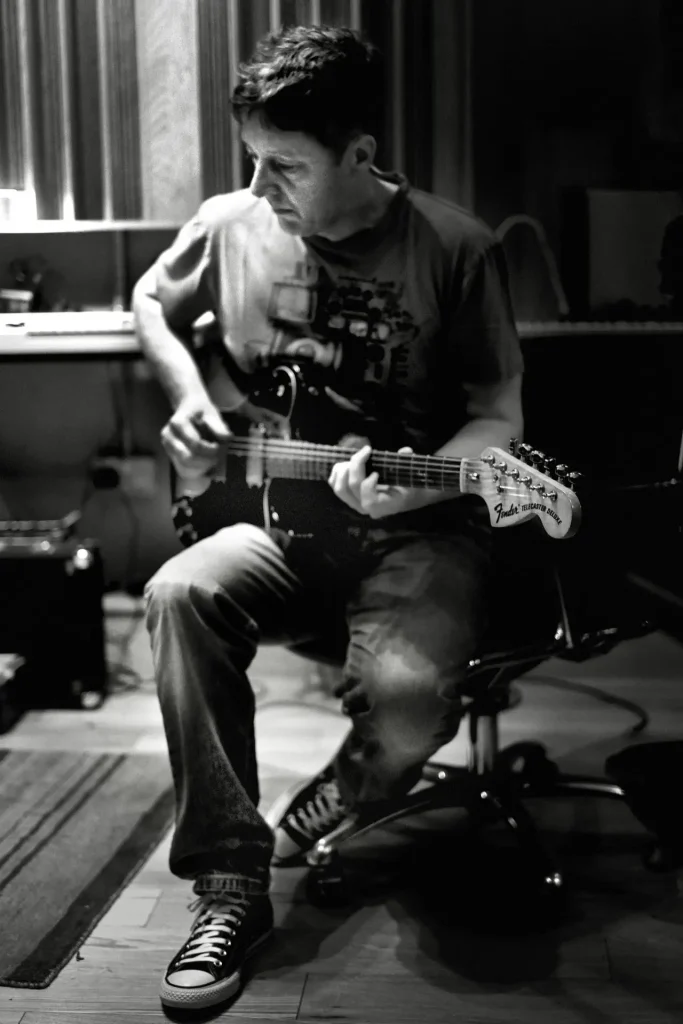
The 35mm 1.4, a 50mm in 35mm, is a very common focal length. With a nifty fifty you can’t go wrong, and this is a remarkable one, borrowed from my girlfriend, it must be one of the most beloved lenses of the Fuji X series since its introduction in 2012 as part of a first set of three lenses. The wide aperture is a key feature in its lovely image rendering, presenting a beautiful, dreamy bokeh.

The Westway
After the studio photos, we moved to the Westway, in the nearby area. A concrete roadway raised by stilts built in 1970 between Paddington and North Kensington, the Westway was then quite controversial, leading to many protests by local residents.

Not only did this infamous structure have a huge impact in the urban landscape, changing it through house demolitions and obliterating roads, but it also affected the local communities’ quality of life by increasing air and sound pollution. In spite of that, the Westway became a landmark in popular culture, mentioned or used as a backdrop by bands like The Clash, The Jam or Blur, and has been the inspiration for J. G. Ballard’s novel Concrete Island.
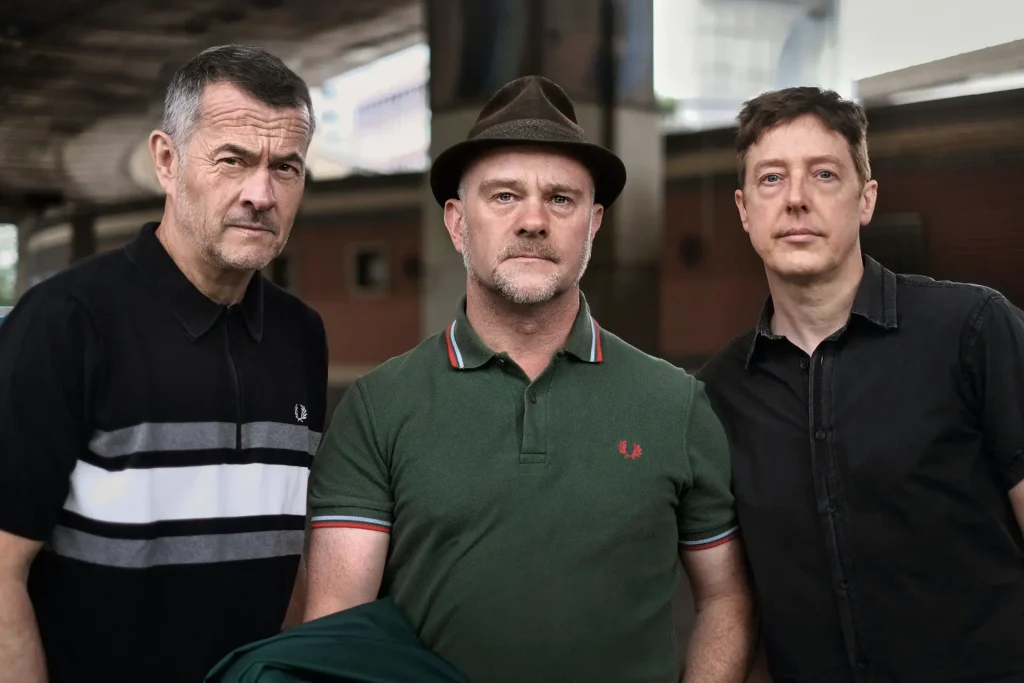
As we arrived underneath the road flyover, I noticed right away what a fantastic spot for photography we had ahead of us, a vast car-free ground area where we could move freely with no obstacles, as if in a large outdoor studio. Conveniently, the most interesting and graphically busiest part of the setting stood above our heads: the meandering bottom of the Westway, imposing itself like a gigantic Scalextric track.
For this part I have used the Fuji X-T3 with the three lenses, and the Leica M6 with the Summicron 35mm (f/2) loaded with Kodak T-Max 400. The Leica M6 is one of my favourite cameras, it is almost silent, discreet and it never failed me. The Summicron 35mm (f/2) that I own is the first version, the goggled one, initially made in 1958 to compensate the Leica M3 lack of 35mm frame lines on the viewfinder. This is an extraordinary lens, very sharp with no visible distortion and exquisite image quality.
Unfortunately, in some of the Leica shots that I thought would work well, there was always someone blinking; therefore, those frames became unusable. Of course, unlike with digital, after the shutter clicks, we cannot check the image to confirm if everything is ok. I took headshots, half and full body portraits.

There is a feel of the British 80’s indie style here, perhaps for the musicians’ poses and the casual Brit attire they were wearing, the angles of framing, or just for the allusive Westway itself. The digital photos were shot using the Astia Soft Film Simulation on the X-T3.
The final black and white versions were converted with Black and White adjustment layers on Photoshop, this way I was able to individually adjust the grey tonalities of a specific colour. Fuji Acros film simulation is also a good option to approach a black and white film look.
Chiswick & Hammersmith

I was pleased to find out that Ian and I shared a similar interest in British Crime films, like John Mackenzie’s The Long Good Friday, Mike Hodge’s Get Carter, Neil Jordan’s Mona Lisa or The Sweeney original TV series, agreeing that it would be great to playfully convey a hint of that notorious cockney gangster atmosphere into the photo session. Three musicians reunite several years later to work on a new record, depicted in the fashion of veteran wise guys getting back together to execute a genius heist.
We then went toward the riverside for the main part of the shooting. Chiswick is a charming West London district that has kept its pleasant village atmosphere over the years. There are plenty of graceful Victorian cottages and Georgian homes by the river, teeming with green spaces including nature reserves harbouring wildlife. All in all, a truly perfect setting when seeking a bucolic, perennial ambience.

As we walked along the Chiswick Mall heading for Hammersmith, we could observe the Thames slightly flooding the road and pavements, apparently a frequent scenario when high tides occur in the area. There we stopped for some captures, now in more classic apparel with the overflowing river surrounded by vegetation in the background.

We noticed that this would be excellent scenery to illustrate the album’s first single, Like Water. I was particularly happy with the Mamiya photo where Ian is holding a short wooden stick as if it was a knife, Ewan and Stephen standing behind him vaguely out of focus. I think the cinematic Brit Noir aura that we had discussed before is there, with a frisky approach, assumed by the false menace of the harmless, risible stick. The stern faces and outfits did the rest to accomplish the mood.

In this section I used the Fuji, the Leica and the medium-format Mamiya C33. This beautiful brick of a camera, weighing 1810 g, was a gift from a kind friend, it uses a 6×6 format on 120mm film and it is part of the great Mamiya C series, one of the few Twin-Lens Reflex systems allowing interchangeable lenses.

Although I just have the 105mm 3.5, the ability to choose from a range of seven different focal lengths (55mm to 250mm), along with the extensible bellows for close focusing, makes this a unique camera in a category that includes the distinctive Rolleiflex and the very capable Yashica Mat 124G that I also own.

Next, we reached the Lower Mall in Hammersmith, where, near a landing stage I took a couple of portraits with two opportune signs in the background, Hope Pier and Another World is Possible. A few metres away, we paused for some more shots with the band members sitting on a step in the middle of a river wall. The final part of the session took place by the Hammersmith Bridge. Built 134 years ago, this beautifully ornamented, cast-iron Victorian landmark was the first suspension bridge over the Thames. Sadly, ‘critical faults’ caused by micro fractures were found in its structure, leading to a closure for vehicles in 2019, and since last August for pedestrians and bicycles too. We took several photos under the bridge, a setting that I spotted while doing the location scouting.

One of my favourites was made possible thanks to Stephen, who came up with an interesting lighting solution. He suggested, for a group portrait, that if they leaned against the river wall, we could take advantage of the light reflected by the water while the bridge deck overshadowed the rest of the scene. Indeed, while the bodies remained in a gloom, an ethereal gleam arose across their faces, assigning a magical strangeness to the image. I photographed it with the Fuji using the 50mm f/2, and I was glad about the smooth and warm black and white film-look I attained after processing it.

In the same spot, I used the Nikon FM2n with the Nikkor 20mm f/3.5, an ultra-wide angle to emphasise the riveting bridge deck structure over their heads. I have written about this great lens before, it is still one of my first choices.

Finally, we did the last photos by the bridge, from which I would highlight the individual portraits with the Mamiya, for the classic, retro look enhanced by the slightly perceptible Victorian ornaments in the background.




Final Thoughts
We finished the shooting earlier than expected; In fact, I never thought that it would be feasible to complete a photo session in three different locations, using four different cameras by mid-afternoon. The weather has been helpful, and it was indeed a great, fruitful journey. Mutual affinity is clearly an asset, and in this case interaction of ideas with the band was also a big plus. It was a pleasure to meet and work with Bradford.
I started to select and edit the photos. Gladly, all the four cameras responded well to the task, each in its own unique way.

I naturally took more photos with the Fuji, therefore I had a much wider selection and better probabilities of getting good results. I really like the Fuji files; they are punchy, very sharp, with beautiful colour rendition and pleasant to the eye.

The Mamiya was quite a surprise, as I have selected more than half out of the 12 frames from a single roll of Tmax 400, all in focus, displaying a rich range of tonalities with the correct exposures.

The Leica was a bit the opposite of the Mamiya, as previously pointed out, I was unlucky with the number of usable frames, it was not a matter of image quality though, just aesthetic issues, as I was happy with the few that I have selected. Last, the Nikon FM2n with the 20mm, I chose it just for some shots under the Hammersmith Bridge, and as always it did a good job. I didn’t use it much in this shooting, as I preferred a more classic framework for the band, although the 20mm would have been a suitable option in the more lively rehearsal part in the studio, if the lighting conditions were more appropriate.

Then, unavoidably, I saw myself comparing the files and getting back to the old digital versus analogue debate.
The Fuji photos are very good, however, regarding black and white, as I didn’t use colour film, I think that the analogue cameras managed to depict similar scenes in the session with a slightly more natural, organic feel. There is deepness, some alluring dream-like character that I think is distinctive to film.
Surely, digital can often be very close and even indiscernible from analogue, as in the portrait under the bridge that I referred to as film-like and that I cherish. It required some post-production work to achieve that though. Sadly, many times, a superfluous excess of detail and a harsh tonality transition, normally in brighter tones or highlights is noticeable on digital.
This is of course a matter of taste, as I always praised and sought the classic black and white look of film; it has a sumptuous, artistic character that can be simultaneously raw and visceral. It perfectly reflects my visual interpretation of the world and has been always the choice for my Photography projects.
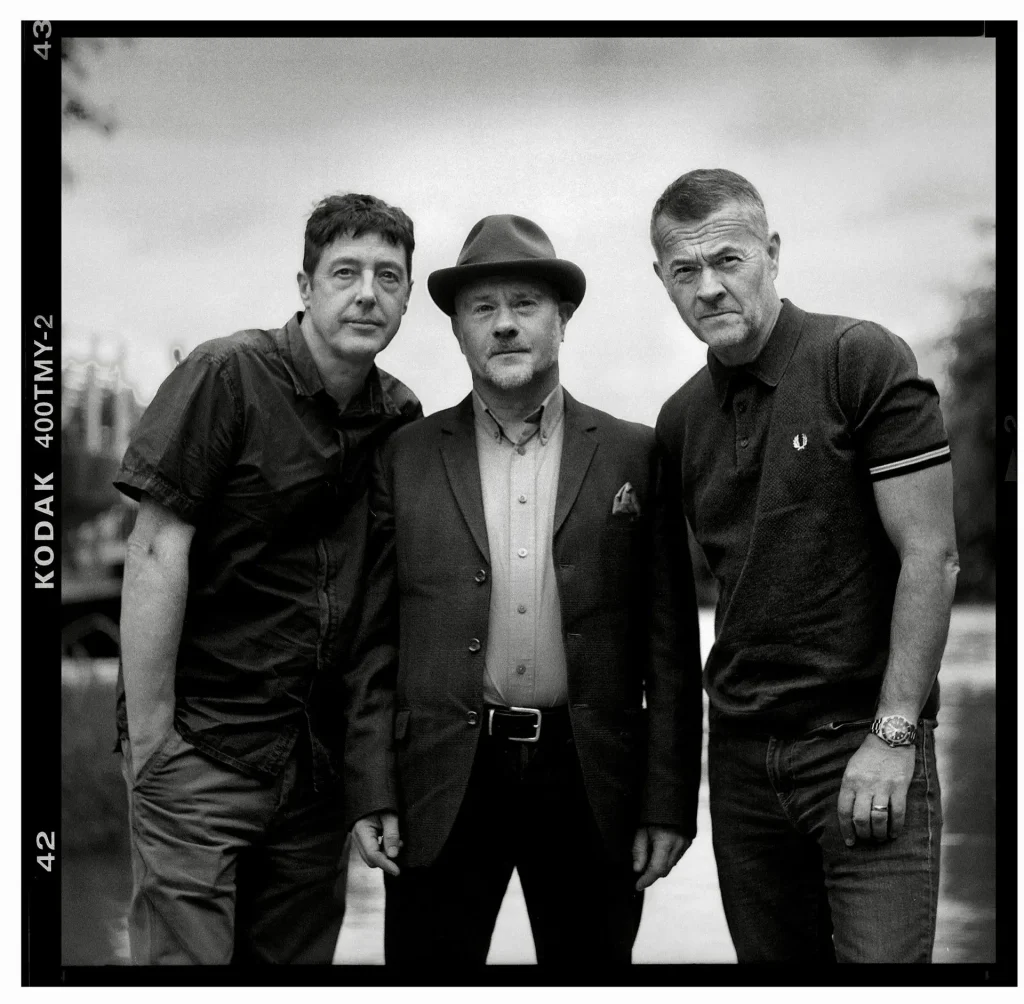
Digital cameras are constantly evolving, and we tend to expect new features every day, especially wanting more and more megapixels. On the other hand, film cameras are not so sophisticated technically, and in my opinion, they don’t need to be, they are good as they are. This means they give me exactly what I want for my personal work and I never think that a photo would look better if it had more resolution. Unlike pixels or fake digital grain, the natural texture of silver halide crystals always looks pretty, even when it is blown up dozens of times and the random grain pattern is revealed in all its beauty, resembling a Paul Signac or Georges Seurat Pointillist painting. Therefore, those so-called limitations of film are for me exquisite idiosyncrasies.

At the same time, I have to say that I am very excited with the awesome features of my Fuji X-T3; digital definitely allows me to respond much faster to commercial work and above all to photograph more. Now, every time I go out, I take it together with one or two analogue cameras. I love the challenge it has brought me. As before, I am meticulous and strict with film, keeping it for my long term and more personal projects, while with digital I am straightforward and keen to explore different styles, not worrying about economy of frames. This duality turned the whole photographic experience into something quite refreshing and creatively rewarding.
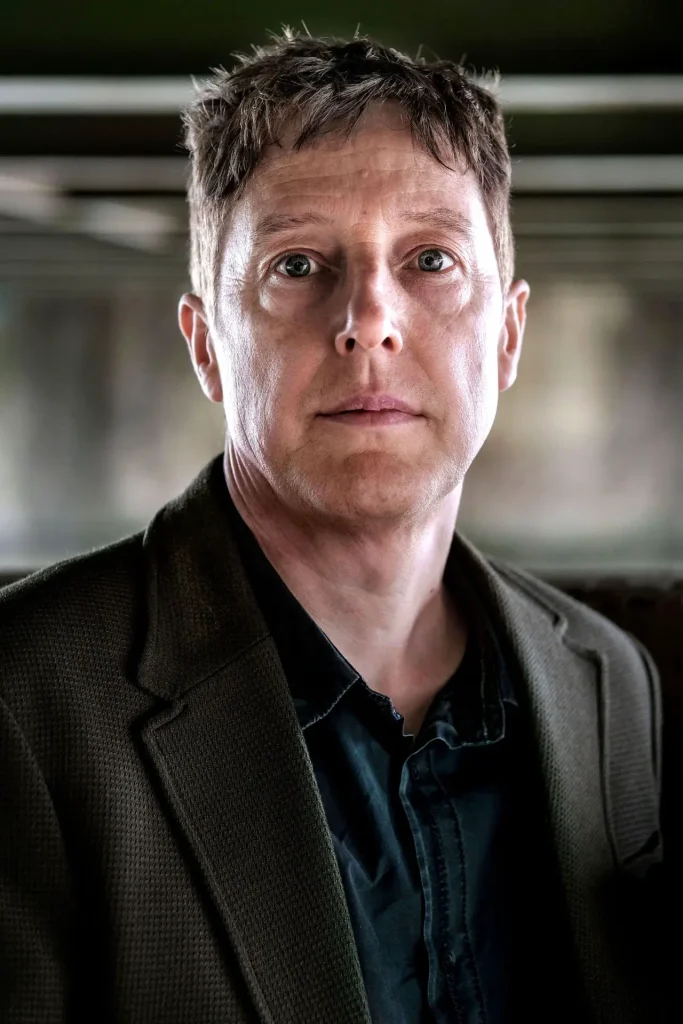


Never at any time have we had such a multitude of different options to photograph with: from the hauntingly beautiful old collodion wet plate process; cheap and superb Japanese rangefinders; ubiquitous smartphones; quirky amazing folding cameras; sixty-year-old great and fully-functional SLRs to the stunning 100MP and 400MP medium format digital cameras, and many more. Apart from the great loss that was the discontinuation of the dazzling and irreplaceable Kodachrome, I cannot see a reason to not consider ourselves privileged.
You can follow my work here:
My website: https://fernando-martins.com
My Instagram account: fernandomartinsphotography
My Facebook Photography page: FernandoMartinsPhotography
My Photo book Cidade Sombra / https://photobookcafe.co.uk/items/show/187
Bradford:
Bradford-The Band
Bradford- Bright Hours
Share this post:









Comments
Barry Reid on Record Covers & the Chronicle of a Photo Shoot for ‘Bradford’ (with 4 Cameras) – by Fernando Martins
Comment posted: 03/03/2021
Comment posted: 03/03/2021
Comment posted: 03/03/2021
Comment posted: 03/03/2021
Maxx on Record Covers & the Chronicle of a Photo Shoot for ‘Bradford’ (with 4 Cameras) – by Fernando Martins
Comment posted: 03/03/2021
Comment posted: 03/03/2021
David Hume on Record Covers & the Chronicle of a Photo Shoot for ‘Bradford’ (with 4 Cameras) – by Fernando Martins
Comment posted: 03/03/2021
Comment posted: 03/03/2021
Rock on Record Covers & the Chronicle of a Photo Shoot for ‘Bradford’ (with 4 Cameras) – by Fernando Martins
Comment posted: 03/03/2021
Comment posted: 03/03/2021
ARTHUR W GOTTSCHALK on Record Covers & the Chronicle of a Photo Shoot for ‘Bradford’ (with 4 Cameras) – by Fernando Martins
Comment posted: 03/03/2021
Comment posted: 03/03/2021
Michael J on Record Covers & the Chronicle of a Photo Shoot for ‘Bradford’ (with 4 Cameras) – by Fernando Martins
Comment posted: 03/03/2021
That early pic of your brother is a bit Morrissey-ish isn't it? I haven't thought about Corbijn for ages, but he's brilliant and the format of the LP cover is the thing that got me interested in design and draughtsmanship, and although I was originally a Heavy Metal kid (which is often less photographically driven), my tastes have broadened a bit over the years.
That bit under the Westway is 200m from my flat and the footpath from which you shot the band against Hammersmith Bridge is one of my favourite places to drink beer. I don't intend to undermine your prodigious talent and technical skill but I think they are two of the most photogenic spots in West London!
Comment posted: 03/03/2021
Comment posted: 03/03/2021
Keith W on Record Covers & the Chronicle of a Photo Shoot for ‘Bradford’ (with 4 Cameras) – by Fernando Martins
Comment posted: 03/03/2021
Great images and story about the musicians. I particularly like the shots taken on the Mamiya, with the Kodak T Max producing a lovely range of tones.
As for LP covers, again in my case you are pushing at an open door. Being of a slightly older vintage, it's some of the early Bob Dylan covers (Freewheelin, Times they are a'changin, Highway 61 etc.) which have always stuck in my mind and the loss of this means of showcasing photography is something to be lamented..
A most enjoyable article. Thanks for posting.
Comment posted: 03/03/2021
BWS on Record Covers & the Chronicle of a Photo Shoot for ‘Bradford’ (with 4 Cameras) – by Fernando Martins
Comment posted: 03/03/2021
Comment posted: 03/03/2021
Castelli Daniel on Record Covers & the Chronicle of a Photo Shoot for ‘Bradford’ (with 4 Cameras) – by Fernando Martins
Comment posted: 04/03/2021
You just presented a master class! It was a joy to read and the photos are first class.
Thanks for mentioning Reid Miles. I loved his work with the band Chicago. He was also that rare combination of designer/photographer.
Comment posted: 04/03/2021
Anthony on Record Covers & the Chronicle of a Photo Shoot for ‘Bradford’ (with 4 Cameras) – by Fernando Martins
Comment posted: 08/03/2021
Thank you for a great read! It was informative and inspirational. I was curious to know if you used a flash for any of these photos, or did you just use available light? Cheers!
Comment posted: 08/03/2021
Peter Simonsson on Record Covers & the Chronicle of a Photo Shoot for ‘Bradford’ (with 4 Cameras) – by Fernando Martins
Comment posted: 10/03/2021
Comment posted: 10/03/2021